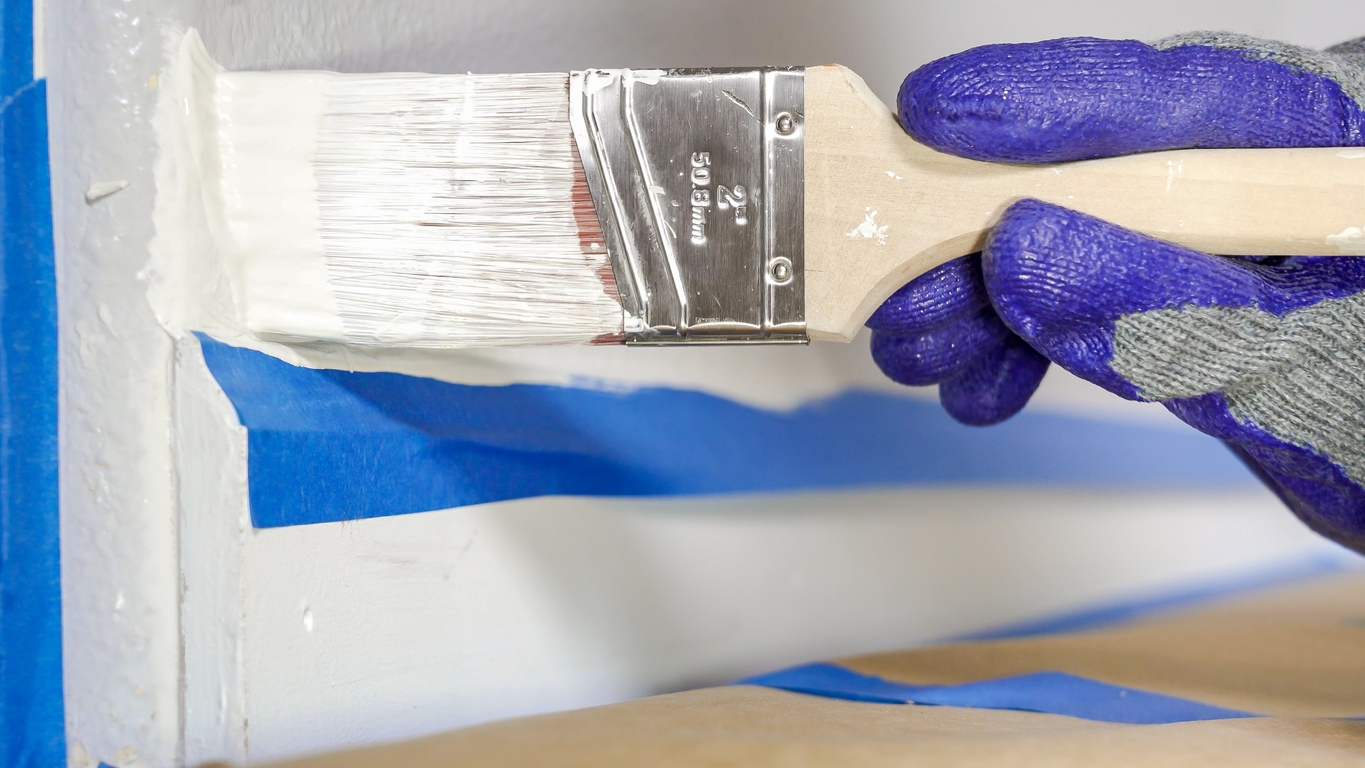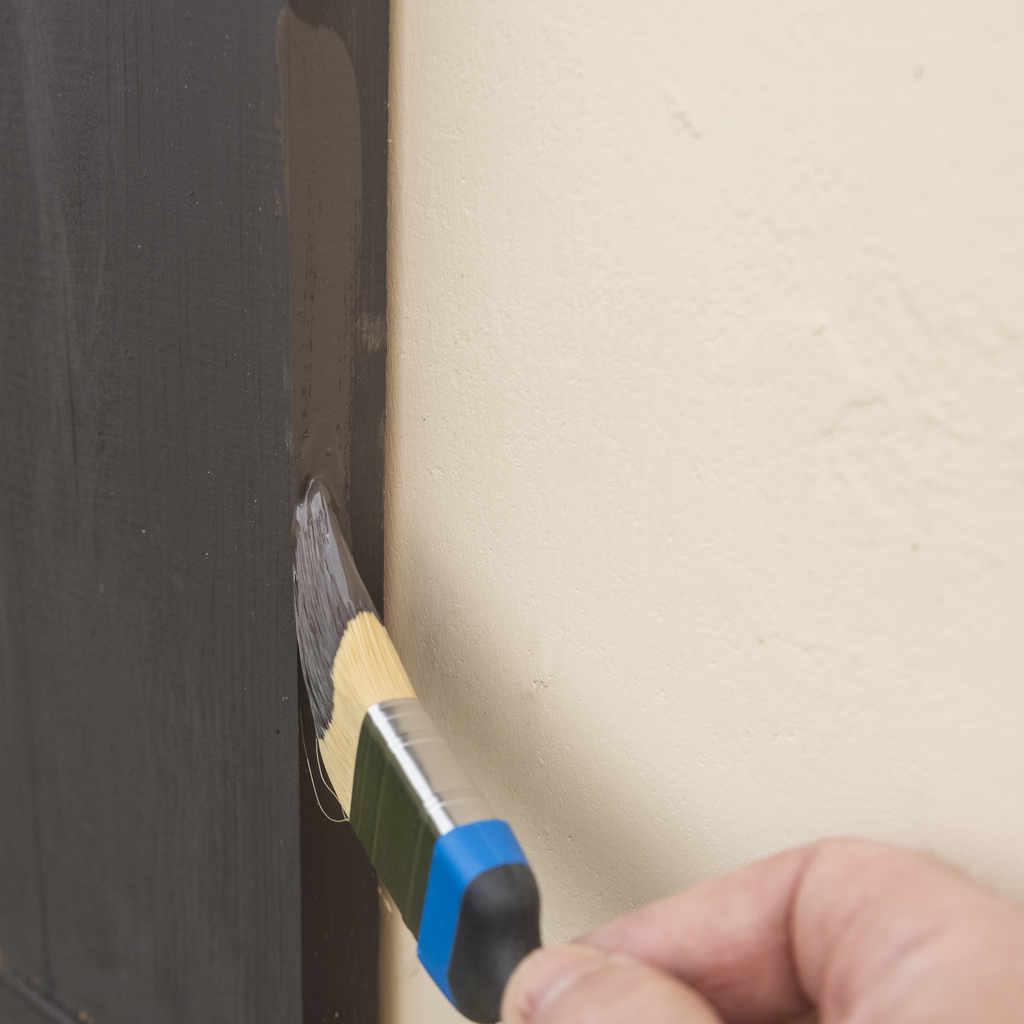One of the (not-so) secrets of a successful paint job is using the right tools! Choosing the appropriate paintbrush is crucial to achieving high-quality, efficient results. Professional painters understand the importance of selecting the perfect tool for the job—they know that the right brush helps prevent streaks, ensures smooth application, and contributes to a flawless finish.
Whether you use a wide brush for large surfaces or a precision one for detailed work, the right paintbrush can make all the difference in the final outcome. So, next time you pick up your brush, remember that the right choice can lead to a professional-looking result!
Understanding different types of paintbrushes
There’s not one, not two, or even three, but many types of paintbrushes! They are classified according to bristle material, shapes, and applications.
Natural vs. synthetic bristles
- Natural bristles are made from animal hair (typically hog, sable, or squirrel). They are ideal for oil-based paints, as they hold and distribute thicker paints smoothly and provide a smooth finish. However, they can absorb moisture, so they may not be suitable for water-based paints.
- Synthetic bristles are made from nylon or polyester and are better for water-based or latex paints. They don’t absorb water, ensuring that the bristles maintain their shape and stiffness when working with these paints. Thus, they give a smoother finish and prevent streaking.
Brush shapes and their uses
- Flat brushes: These have square edges and are perfect for broad, even strokes and covering large areas. They are also excellent for cutting in around edges along trim or walls.
- Angled brushes: The bristles are cut at an angle, making them ideal for precise cutting in around corners, edges, and trim. They help control the paint flow in tight spots.
- Round brushes: These are ideal for detail work and applying paint to small or intricate areas, such as molding or decorative pieces.
Brush sizes for various applications
- Narrow brushes: Typically used for detail work, like painting trim, edges, and intricate designs. They allow for precision and control.
- Wide brushes: Used for covering large surfaces, like walls or wide trim. Professionals select a width that allows for more coverage, reducing the number of strokes needed for efficiency. For large walls, a 3 to 4-inch brush is common.
Key qualities professional painters look for in brushes
Bristle quality and durability
Professional painters prefer brushes with high-quality bristles designed to minimize shedding and maintain their shape over time. Durable bristles ensure a smooth, even paint application, providing consistent coverage even with extensive use. Brushes with superior bristles can also hold more paint, reducing the need for frequent reloading.
Brush handle comfort
A comfortable handle is essential for precision and control, especially during long projects. Handles with ergonomic designs reduce hand fatigue and improve maneuverability, allowing painters to work more efficiently and accurately, even in tight or high-precision areas.
Firmness and flexibility of bristles
The stiffness of the bristles plays a crucial role in the type of surface being painted. Stiffer bristles are better for rough or textured surfaces, as they can push paint into grooves and imperfections. Softer bristles, on the other hand, are ideal for smooth surfaces, providing a fine finish and preventing streaks. The right balance of firmness and flexibility allows painters to achieve the desired finish for different projects.
Matching the brush to the type of paint and surface
Choosing brushes for different paint types
- Oil-based paints: Use natural bristle brushes, as they hold more paint and offer a smooth finish. Synthetic brushes may lose their shape when exposed to oil-based paints.
- Latex paints: Synthetic brushes (nylon or polyester) work best for latex paints because they maintain their shape and prevent the bristles from absorbing too much moisture.
- Specialty paints (e.g., chalk paint, enamel): Follow the paint manufacturer’s recommendations, but synthetic brushes are often suitable for water-based specialty paints, while natural bristles may be used for oil-based specialty paints.
Selecting brushes based on surface texture
- Smooth surfaces (e.g., drywall, trim): Select soft-bristled brushes (usually synthetic) to provide a smooth, even finish without leaving brush marks.
- Rough surfaces (e.g., textured walls, wood): A stiffer brush (often with synthetic bristles) is ideal, as it helps distribute paint evenly into the grooves or rough areas.
Precision needs for edges and detail work
- Angled or sash brushes: These brushes are perfect for cutting in around edges, trim, and corners. Their slanted shape allows for better control, creating clean, sharp lines without overlapping adjacent surfaces.
How do professionals test and evaluate brushes?
Professionals evaluate brushes through a series of tests to ensure quality and performance:
- Initial bristle check: Professionals inspect the bristles to ensure they’re firm and evenly trimmed. This helps avoid issues like uneven application or loose strands shedding into the paint, which can leave behind unwanted marks or debris.
- Flex test for smooth application: To ensure smooth and controlled strokes, pros test the brush’s flexibility by gently bending the bristles. The right amount of give allows precise control, preventing streaks and ensuring an even coat.
- Holding paint and maintaining shape: A good brush holds paint well without dripping. Professionals check its ability to maintain shape during use, as brushes that lose their form or release too much paint can make the application less smooth and lead to excessive touch-ups.
Maintenance and care of quality brushes
- Proper cleaning for longevity: For latex paint brushes, clean them with warm water and mild soap immediately after use, scrubbing the bristles with your fingers to remove paint. For oil-based paints, use a solvent like mineral spirits or paint thinner, followed by soap and water to remove any remaining residue. Regular cleaning prevents paint from hardening in the bristles, which can cause the brush to lose its effectiveness and lifespan.
- Storing brushes correctly: Store brushes upright, with the bristles facing up, to prevent them from becoming misshapen. Hanging them by the handle or using protective covers can help preserve their shape, especially for high-quality brushes. Avoid laying brushes flat or letting them dry with the bristles pointing down, as this can damage the fibers and cause splaying.
- Routine inspection and replacement: Inspect brushes regularly for frayed or bent bristles. A well-maintained brush should retain its shape and have flexible bristles. When bristles become loose, split, or lose their ability to hold paint, it’s time to replace the brush. Professionals replace brushes periodically to ensure clean, precise work and avoid compromised results.
Why investing in quality brushes is worth it
Investing in quality brushes is worth it for several key reasons. First, enhanced finish quality is a major advantage, as high-quality brushes provide smoother, streak-free finishes and a more professional look. They help achieve an even coat, reducing imperfections.
Second, increased efficiency and precision make painting faster and more accurate. A good brush allows for better control, reducing the need for touch-ups or additional coats.
Finally, long-term cost savings come into play because quality brushes are built to last longer and perform better, meaning you won’t have to replace them as often as cheaper alternatives.
Benefits of working with a professional painting company
- Access to professional-grade tools: Professionals use high-quality brushes, rollers, and other tools that aren’t typically available in retail stores. These premium tools ensure smoother application and more precise, durable finishes.
- Experience in selecting the right brush for the job: Professional painters have the expertise to choose the best brush or roller for each surface, whether for detailed trim, large walls, or textured surfaces. This knowledge boosts both quality and efficiency, ensuring optimal results.
- Consistent, high-quality results: Professional painters consistently deliver flawless finishes, thanks to their experience and access to top-tier equipment. Their attention to detail and use of proven techniques provide homeowners with a smooth, long-lasting result they can enjoy for years.
Conclusion
When choosing paint brushes, professionals consider several key factors: the bristle type (natural or synthetic) for compatibility with the paint type, brush shape and size for precision, and handle comfort for control during prolonged use. Quality brushes ensure smooth, even application and minimize streaks.
Homeowners should recognize the value of professional painting services for achieving a high-quality, durable finish. Our skilled painters at Custom Painting, Inc. use the right tools and techniques to deliver lasting results with minimal touch-ups.
Get a free quote now by calling us at 925-686-0903 or messaging us on our contact page!




